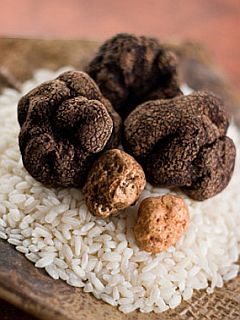
Truffles, the aromatic tubers that grow below ground and are prized for their delicate flavor, are closely identified with Italy and the south of France. However, they also thrive in Slovenia, where truffle hunting is becoming an increasingly popular activity – and is leaving a prominent mark on the local cuisine.
Truffles have always grown in the countryside of Slovenian Istria near the Adriatic Coast and other parts of the Slovenian Littoral. The local woods, with their abundance of oaks and poplars, are the perfect terrain for both the white and the black variety of the truffle. It wasn’t until the period between the two world wars, however, that local residents became aware of the delicacy growing beneath their feet. At the time, Slovenian Istria was under Italian rule and settlers from other parts of Italy, where truffles had long been a prized addition to pasta and other dishes, taught the locals to look for truffles and incorporate them into the local cuisine.
Nowadays, the high value of truffles is no longer a secret. The Istrian white truffle, tuber magnatum pico, can cost up to 2500 euros per kilogram. It grows only in Istria and Italy’ Piedmont region and is prized for its intense aroma. Other varieties of truffles aren’t quite as expensive, but they rarely fetch less than 500 euros per kilo on the market.
For several years, commercial truffle hunting was prohibited in Slovenia and local restaurants had to import the tubers from Italy or Croatia. Recently, however, authorities concluded that the practice of digging for truffles does not harm the environment, and they legalized the practice. Today, some 30 truffle hunters are active in Slovenia.
The truffles may pay well, but the work of the hunters is hardly glamorous. Accompanied by truffle-sniffing dogs, which help to find and dig out the truffles, they spend entire days in the woods throughout the truffle-hunting season, which often lasts from late spring all the way to January. Their yearly “catch” is highly variable, as it depends in large part on the weather and the damage done by wild boars, which also happen to enjoy eating truffles. Still, for many truffle hinters, their work is a passion regardless of what they end up being paid in the end.
Truffles are an increasingly common addition to Slovenian meals and are now available even in simple country inns. Less than a century after they were discovered in the woods of Slovenian Istria, they are becoming an integral part of Slovenian cuisine.

































































